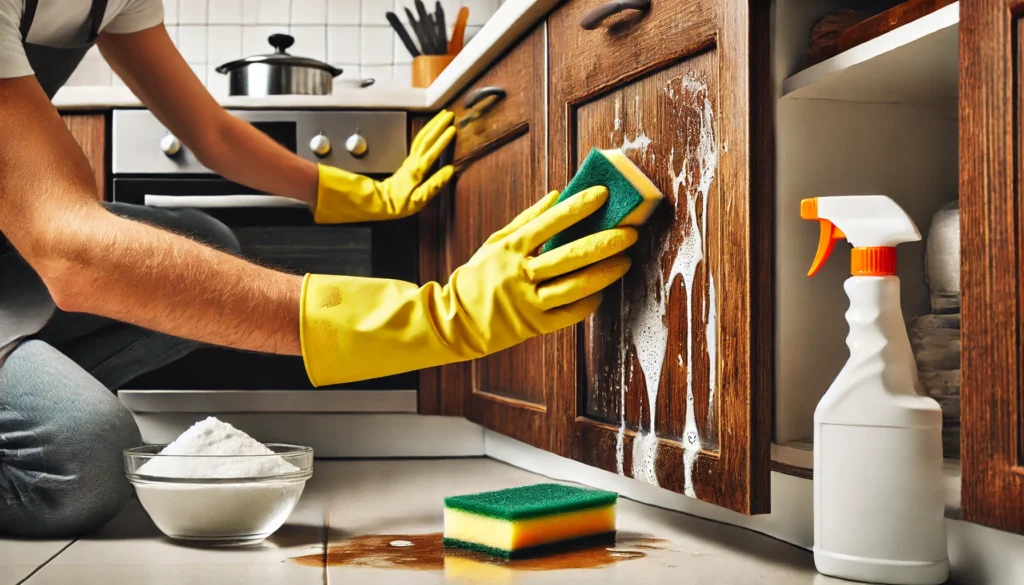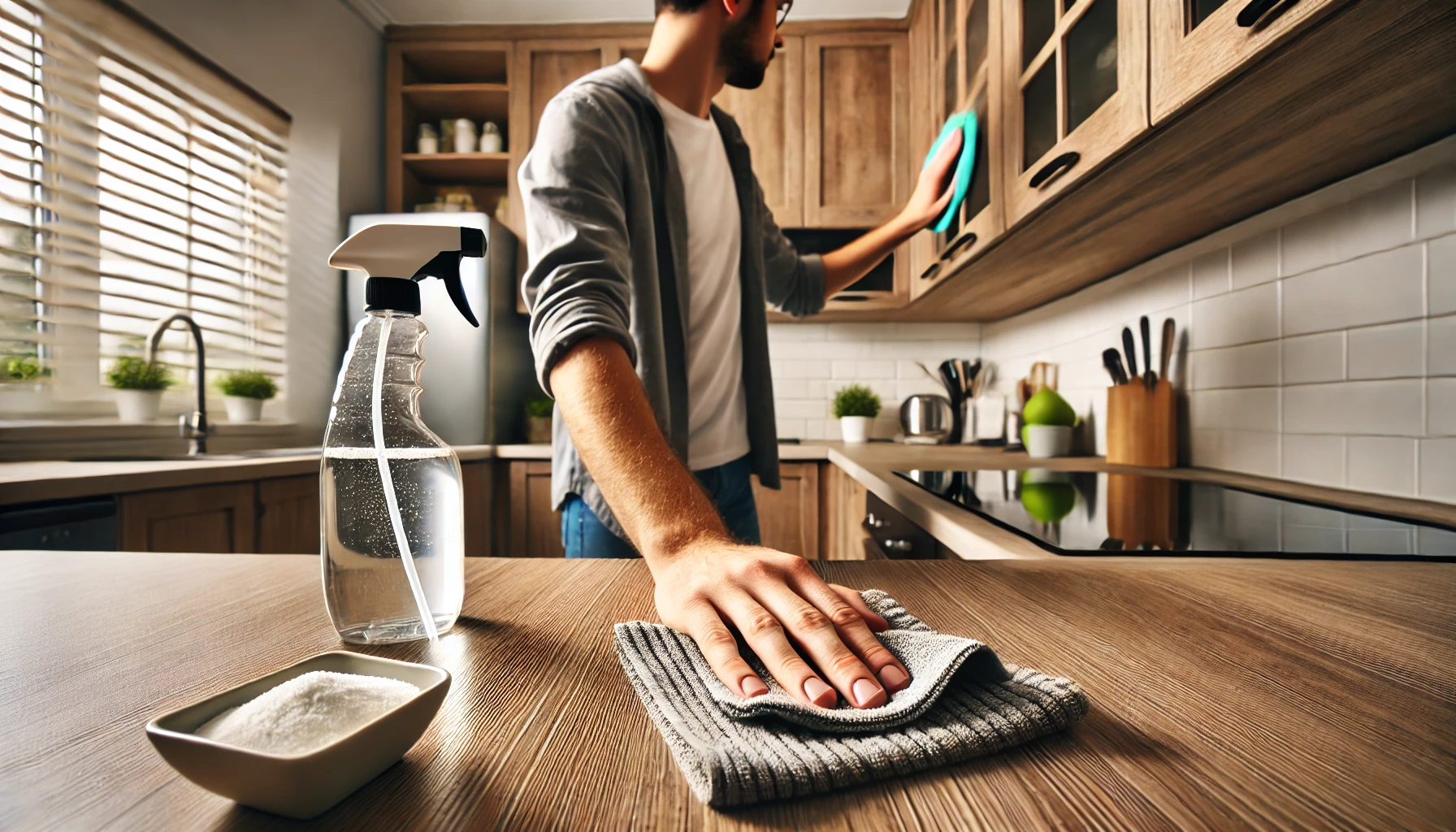Introduction
Laminate kitchen cabinets are a popular choice due to their affordability, durability, and ease of maintenance. However, they require regular cleaning to maintain their fresh and polished look. Over time, grease, dust, and food splatters can build up on the cabinet doors, making them look dull and dirty. Proper cleaning not only improves their appearance but also extends their lifespan.
Unlike wood, laminate surfaces do not absorb liquid or stains as easily, making them easier to clean. However, using harsh chemicals or improper cleaning techniques can cause damage such as peeling, discoloration, or surface scratches. This guide will take you through a detailed, step-by-step process to help you clean your laminate kitchen cabinet doors effectively.
Why Proper Cleaning Matters for Laminate Cabinets
Laminate cabinets require regular maintenance to prevent the buildup of grease, food residue, and dust. Unlike natural wood, laminate does not have a porous surface, but it can still become sticky and dull over time if not cleaned properly.
Keeping your cabinets clean enhances the overall look of your kitchen and prevents the spread of bacteria and germs. Additionally, proper cleaning helps maintain the integrity of the laminate finish, preventing peeling or chipping that can occur due to neglect or improper cleaning products.
Common Issues with Dirty Laminate Cabinets
Dirty laminate cabinets can lead to several issues:
- Grease Buildup: Cooking oils and food splatters can accumulate, making the cabinets sticky and dull.
- Discoloration: Over time, dirt and stains can cause laminate surfaces to appear yellowed or stained.
- Peeling or Chipping: Using harsh chemicals can weaken the adhesive layer of laminate, causing it to peel.
- Bacteria and Mold Growth: In humid environments, mold and mildew can develop, especially around cabinet handles.
By understanding these issues, you can take preventative measures to keep your laminate cabinets clean and in top condition.
Step 1: Gather Your Cleaning Supplies
Before starting the cleaning process, it’s essential to have the right cleaning materials on hand. The right supplies will help you clean effectively without damaging the laminate surface.
Essential Cleaning Tools and Materials
Having the correct tools and cleaning agents is crucial to achieving the best results without harming the laminate finish. Here’s what you need:
- Mild Dish Soap: A gentle detergent can remove grease and grime without harming the laminate.
- Warm Water: Helps in loosening dirt and dissolving cleaning agents effectively.
- Microfiber Cloths: These are soft and non-abrasive, ideal for wiping without scratching the surface.
- Soft Sponge: Helps scrub away light stains without damaging the finish.
- White Vinegar: A natural cleaning agent that cuts through grease and grime effectively.
- Baking Soda: Ideal for tackling tougher stains without causing damage.
- Commercial Laminate-Safe Cleaner: If needed, choose a cleaner designed specifically for laminate surfaces.
- Soft-Bristled Brush: Useful for scrubbing corners and crevices that cloths can’t reach.
Safety Precautions Before Cleaning
- Test Cleaning Agents First: Always test any cleaner on a small, hidden section of the cabinet to ensure it won’t cause discoloration or damage.
- Avoid Excessive Water: Too much moisture can seep into the edges of the laminate, causing peeling or swelling.
- Use Gentle Motions: Avoid scrubbing too hard, as this can wear down the laminate finish.
- Ventilate the Area: If using commercial cleaners, ensure proper ventilation to avoid inhaling fumes.
Step 2: Perform a Basic Cleaning Routine
Once you have all your supplies ready, it’s time to start the cleaning process. A basic cleaning routine should be done regularly to prevent the buildup of dirt and grease.
Preparing the Cleaning Solution
To make an effective cleaning solution, mix a few drops of mild dish soap in a bowl of warm water. For tougher grease buildup, add a few tablespoons of white vinegar. Stir well to create a soapy mixture that is safe for laminate surfaces.
Wiping Down the Cabinet Doors with a Damp Cloth
Dip a microfiber cloth or sponge into the cleaning solution and wring out excess liquid. Gently wipe the cabinet doors, focusing on areas with visible dirt and grease. Always wipe in a circular motion to avoid streaking.
Using a Mild Detergent for Light Stains
For light stains, apply a small amount of dish soap directly onto a damp cloth and gently rub the stain. Rinse with a clean, damp cloth to remove soap residue.
Drying the Surface to Prevent Streaks and Water Damage
After wiping, use a dry microfiber cloth to remove any excess moisture. This prevents streaks and ensures no water seeps into the laminate edges, which could lead to peeling.
Step 3: Deep Cleaning for Stubborn Stains and Grease Buildup

For more stubborn stains and grease accumulation, a deeper cleaning approach is necessary.
Removing Grease and Sticky Residue
Grease is one of the most common issues in kitchen cabinets. Using the right cleaning solution can break down stubborn grease without damaging the laminate.
White Vinegar Solution Method
Mix equal parts white vinegar and warm water in a spray bottle. Spray the mixture directly onto the greasy areas and let it sit for a few minutes. Wipe it off using a microfiber cloth, applying gentle pressure.
Dish Soap and Warm Water Method
For heavier grease stains, mix a few drops of dish soap into warm water. Use a soft sponge to scrub away grease buildup, then rinse with a damp cloth.
Tackling Tough Stains with Baking Soda
If stains persist, make a paste with baking soda and a little water. Apply the paste to the stained area, let it sit for five minutes, then scrub gently with a soft-bristled brush before wiping clean.
Cleaning Cabinet Handles and Hardware
Handles and knobs accumulate a lot of dirt and bacteria. Remove them if possible and soak them in soapy water. If not removable, clean them with a cloth soaked in vinegar or soapy water.
Addressing Mold or Mildew Spots (If Present)
If you notice mold, create a cleaning solution using one part vinegar and one part water. Spray onto affected areas, let it sit for 10 minutes, then wipe clean.
Step 4: Maintaining and Protecting Laminate Cabinet Doors
Regular maintenance keeps laminate cabinets in top shape and prevents long-term damage.
How Often Should You Clean Your Cabinets?
It’s best to wipe down cabinets weekly and do a deep clean once a month.
Preventing Grease and Dirt Buildup
Using cabinet liners and wiping spills immediately can help prevent buildup.
Using Cabinet Protectors or Sealants (If Needed)
Applying a laminate-safe protective coating can extend the life of your cabinets.
What to Avoid When Cleaning Laminate Cabinets
- Avoid abrasive sponges and cleaners.
- Do not use bleach or ammonia-based products.
- Never let water sit on the surface for too long.
Conclusion About How to Clean Laminate Kitchen Cabinet Doors
By following these steps, you can keep your laminate kitchen cabinet doors clean and well-maintained. Regular cleaning, proper stain removal, and preventive care will keep your cabinets looking as good as new for years to come.

